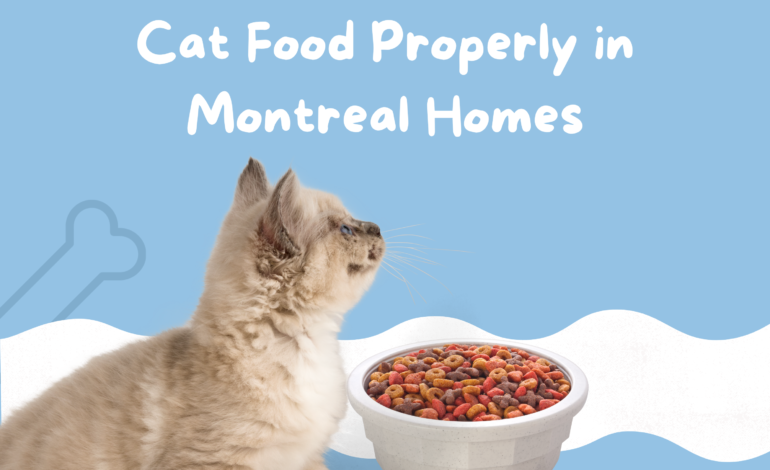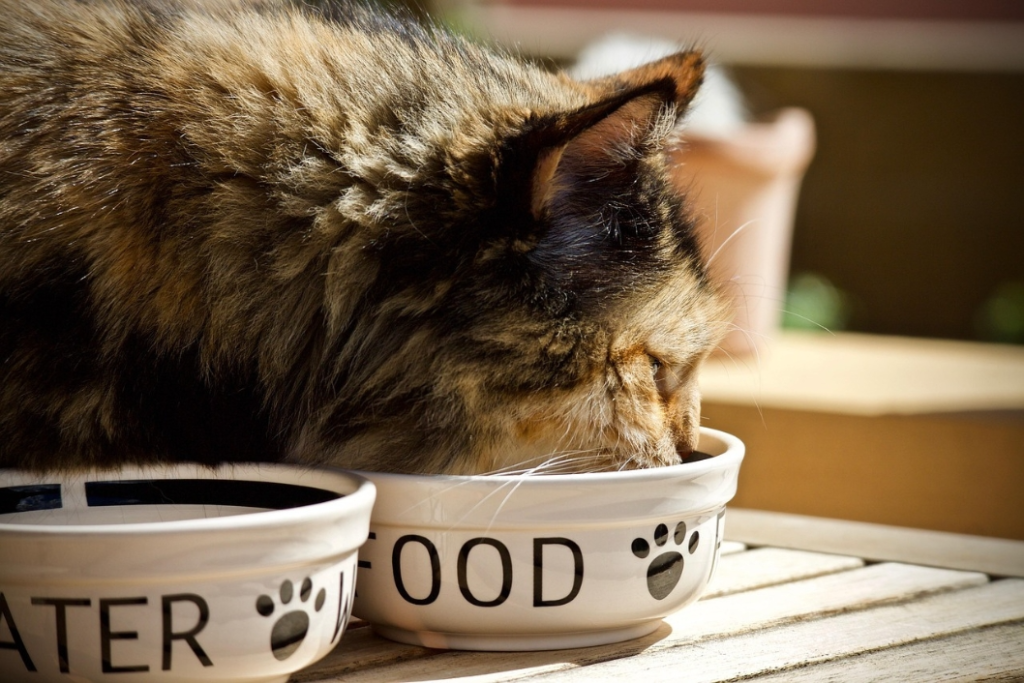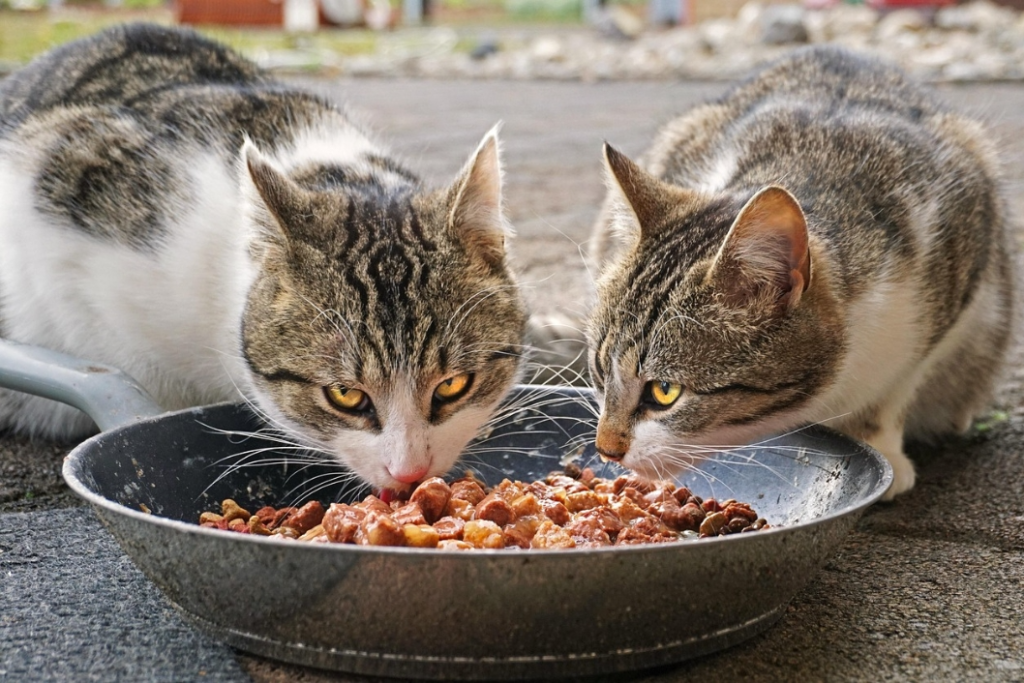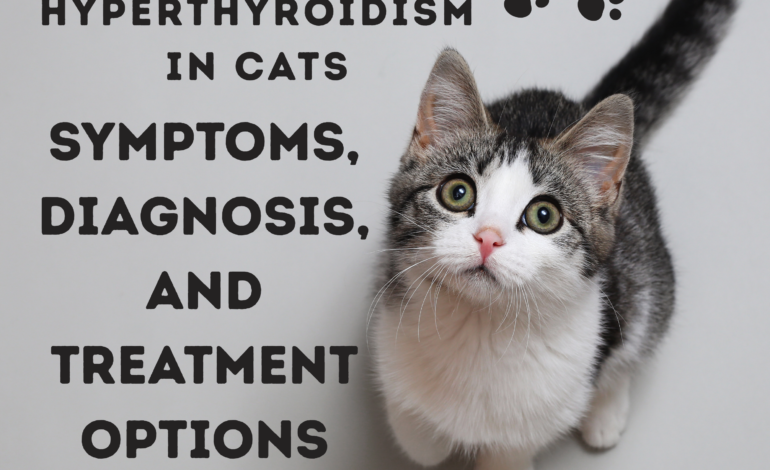How to Store & Serve Wet Cat Food Properly in Montreal Homes

Every cat loves the rich aroma and taste of wet food—but did you know that how you store and serve it can make or break your cat’s health? With 70–80% moisture, wet food helps keep cats hydrated, supports urinary and kidney health, and delights even the pickiest eaters.
But in a city like Montreal, where hot, humid summers and cold winters can affect freshness, it’s not just about opening the can—it’s about proper storage and serving to ensure every bite stays safe, tasty, and nutritious.
Storing Unopened Wet Cat Food

Montreal’s climate throws a few curveballs when it comes to storing cat food — icy winters, sticky summers, and the occasional curious raccoon. Here’s how to keep those cans fresh and safe:
- Winter Tip: Don’t stash extra boxes of food in your garage or balcony during -20°C cold snaps. Freezing and thawing can mess with the can’s seal and texture inside. One local cat parent shared that their cans actually bulged after a deep freeze in January — not something you want to risk.
- Summer Tip: Montreal humidity is no joke. A closed cupboard that feels fine in spring can turn swampy in July. Moisture + metal = rust. Keep cans in a cool, dry pantry, or even on a high shelf near AC airflow if your apartment tends to trap heat.
- Label Life Hack: Since bilingual labels can sometimes make expiration dates tiny or hard to spot, write the “purchase date” with a Sharpie on top of each can. That way you’ll always know which ones to use first — no squinting required.
- Urban Reality: Living in the Plateau or downtown? Mice and raccoons love food storage areas. Use sealed plastic bins to store bulk packs. It keeps pests out and makes your pantry look tidy.
Storing Opened Wet Cat Food

Once you’ve cracked open that can, the clock starts ticking — and Montreal’s climate makes timing even trickier.
- Refrigerate Fast: Aim to get leftovers in the fridge within 30 minutes. In summer, with apartment kitchens hitting 28–30°C even with the fan on, bacteria can multiply faster than you think. One McGill food science study found that bacterial growth can double in just under 20 minutes at those temps.
- Skip the Can: Leaving food in the open can not only absorb fridge odors (nobody wants their cat food smelling like last night’s poutine leftovers) but can also cause metallic “off-flavors.” Instead, transfer it to a small glass jar or BPA-free plastic container.
- Montreal Hack: If you’re juggling multiple cats or flavors, use a bit of masking tape to label the container with the opening date and flavor. It saves you from guessing which pâté is which when you’re bleary-eyed at 6 a.m. in February.
- Use It Quickly: Most vets recommend using opened wet food within 24–48 hours. While some sources stretch it to 3 days, in humid July weather, playing it safe at 48 hours is smarter. Cats are notoriously picky — if it smells even slightly “off,” they’ll walk away.
- Winter Caution: Ever leave a half-can out overnight in a chilly Montreal kitchen and think it’s “basically refrigerated”? Don’t. Even at 15°C, bacterial growth doesn’t stop — it just slows. Always use the fridge.
Serving Wet Cat Food: Best Practices for Montreal Cat Parents
| Step | What to Do | Why It Matters | Montreal-Specific Tip |
| Room Temperature | Take food out of the fridge ~30 mins before serving | Cats prefer food around body temperature (37–38°C) | In Montreal winters, food can feel extra cold indoors — warming helps avoid rejection |
| Slight Warming | Place in warm water or microwave in 5–10 sec bursts, stir well | Enhances aroma, prevents “cold shock” | In January, warming boosts appetite; in July, keep slightly cooler to avoid spoilage |
| Aroma Boost | Serve slightly warmed food | Stronger smell increases palatability, especially for picky or sick cats | Studies show warmed food is more appealing — useful during seasonal appetite drops |
| Avoid Overheating | Never serve hot food | Risk of burns and nutrient loss | Always test with your finger before serving |
| Serving Size | Offer small, manageable portions | Prevents waste and spoilage | In humid summers, uneaten food spoils faster — smaller portions keep it safe |
Avoid Leaving Wet Cat Food Out Too Long

In most instances, the short of it is this. You shouldn’t leave wet cat food out for more than 2 hours. But in Montreal, the “safe window” of several months can swell or contract depending on the season.
- Winter Factor: In January, when apartments can be frigid (even with the radiators on full blast), food might keep a bit longer. That said, cats are often turned off by food that becomes too cold on the plate.
- Summer & Humidity: In July, in sticky Montreal bedrooms, spoilage could already occur within one hour. Bacteria love warm, moist environs and uneaten food can spoil before you know it.
- Palatability Over Safety: Cats have much more sensitive noses than we do. A dish that you believe “smells okay” after two hours may already be unpalatable to your feline.
👉 Pro tip for Montreal pet parents: If your cat is a grazer, try serving smaller portions throughout the day or using a timed feeder with an ice pack insert. That way, food stays safe and appetizing no matter the season.
Extra Tips for Montreal Cat Owners

Montreal’s climate swings — humid summers and dry winters — can affect wet food storage.
- Track humidity & temperature: Use a cheap hygrometer/thermometer to spot risky conditions.
- Choose smaller cans/pouches: Less waste, especially in summer heat.
- Seal properly: Silicone lids or glass containers work better than plastic wrap.
- Watch your cat: Refusal to eat, vomiting, or diarrhea may signal spoilage.
👉 Pro tip: In summer heatwaves, serve smaller, frequent meals to reduce spoilage risk.
Conclusion
At the end of the day, how you store and serve wet cat food is just as important as the food itself. A few simple steps — refrigerating promptly, avoiding long exposure at room temperature, and serving meals at the right temperature — can make all the difference in freshness, flavor, and safety.
For Montreal cat parents, where weather swings from sticky summers to icy winters, being mindful of storage conditions helps protect both your cat’s health and your peace of mind. By keeping these habits, you’re not just feeding your kitty — you’re ensuring they stay happy, healthy, and purring with every meal.
👉 Want more expert tips on cat nutrition, feeding, and care? Explore our full guides at Meow Care Hub and give your feline the healthiest meals possible.
FAQs – Wet Cat Food Storage
Q1: How do I store wet cat food?
A: Store unopened wet cat food in a cool, dry, and dark pantry. Once opened, transfer it to an airtight container and refrigerate immediately.
Q2: How long does wet cat food last?
A: Unopened wet food lasts until its expiration date. Open wet cat food should be used within 24–48 hours and should never sit out at room temperature for more than 2 hours.
Q3: How long can wet cat food sit out?
A: Wet cat food should not be left out at room temperature for more than 2 hours to prevent bacterial contamination and spoilage.
Q4: How do I store wet cat food after opening?
A: Refrigerate promptly in an airtight container, label it with the opening date, and use within 24–48 hours. Avoid freezing as it may alter texture and taste.
Q5: What is the best way to serve refrigerated wet cat food?
A: Bring it to room temperature by removing it from the fridge 30 minutes before feeding or slightly warm it in warm water. Never serve hot food that can burn your cat.Q6: How do I maintain freshness for cat wet food storage?
A: Use airtight containers, keep track of opening dates, avoid exposure to heat and sunlight, and serve only what your cat can finish in one meal.





